52 Weeks of Inspiring Illustrations, Week 21: images inspired by Dante’s Divine Comedy
To celebrate the first meeting of the Lectura Dantis Andreapolitana (the St Andrews Lectura Dantis) of this academic year, I spent a bit of time in the stacks finding some great illustrations of Dante’s most famous work. Because of its early popularity and its great critical acclaim, examples of illustrations accompanying Dante’s Commedia can be found even in the very early editions. I’ve selected a few from our Rare Books Collection to display here.
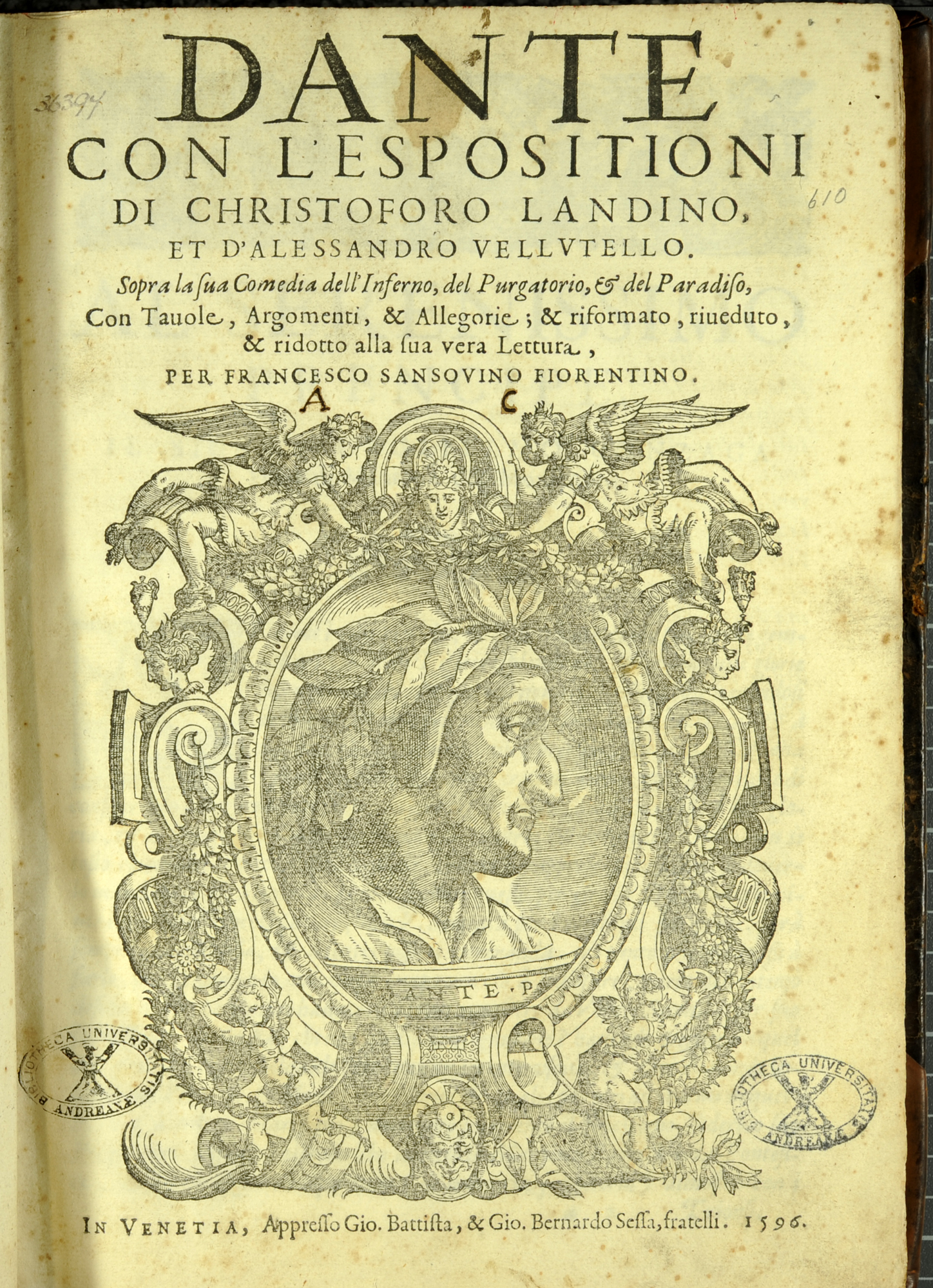
First up is a book that has been featured on this blog before, and is used in the posters for the current Lectura Dantis. St Andrews has a copy of the Sessa brothers 1596 folio edition of the Commedia illustrated with beautifully detailed woodcuts throughout. The introduction (featured below) is full of woodcut diagrams of the several layers of the Inferno, and almost each canto of the entire Commedia is illustrated. These woodcuts were first used in an edition printed in 1544, and the 1596 edition was the last edition printed by the Sessa family in Venice. These woodcuts serve as much as an informative device as they do illustrations, and also act as a quick way to identify a canto as you are flipping through the text.
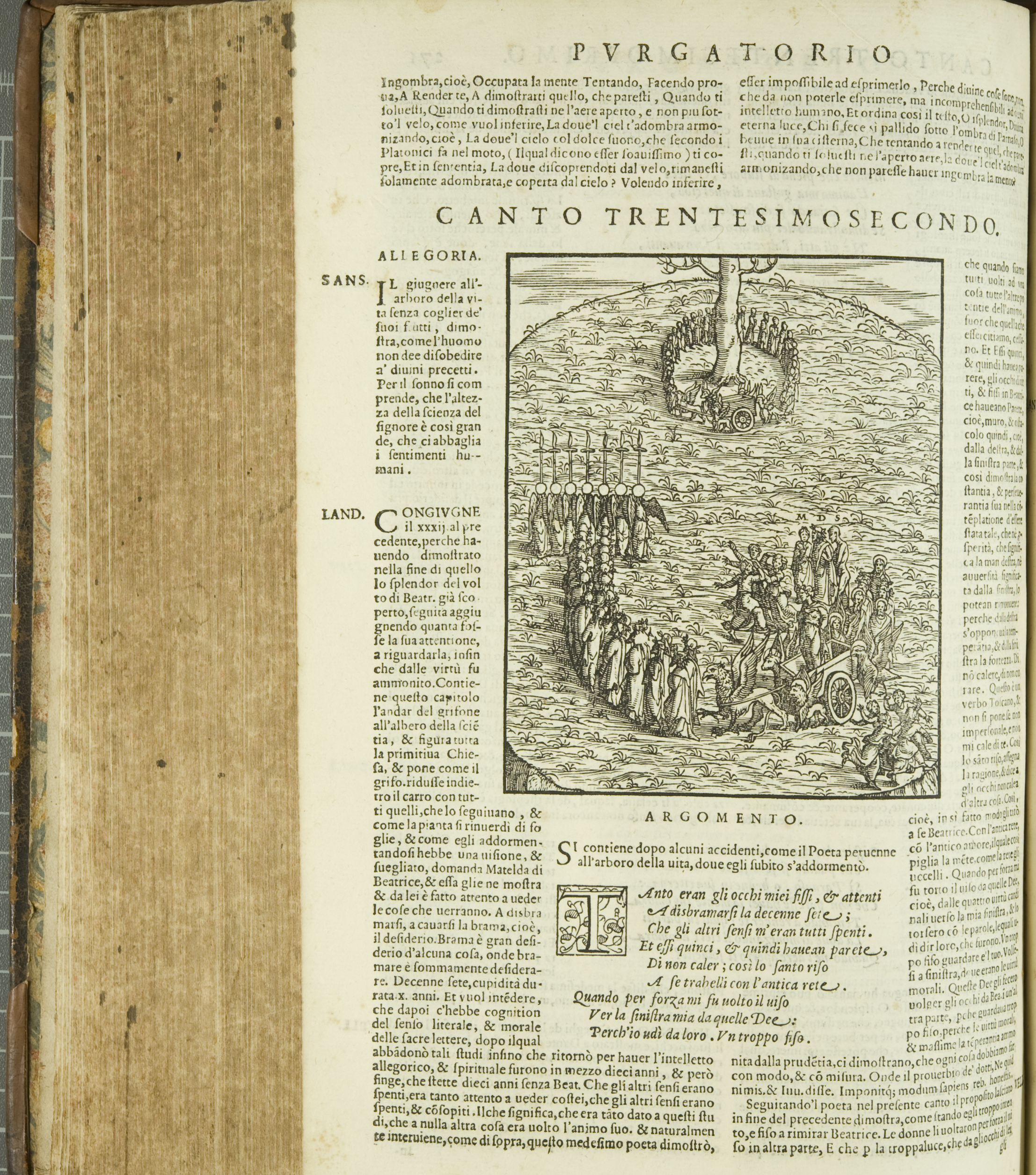
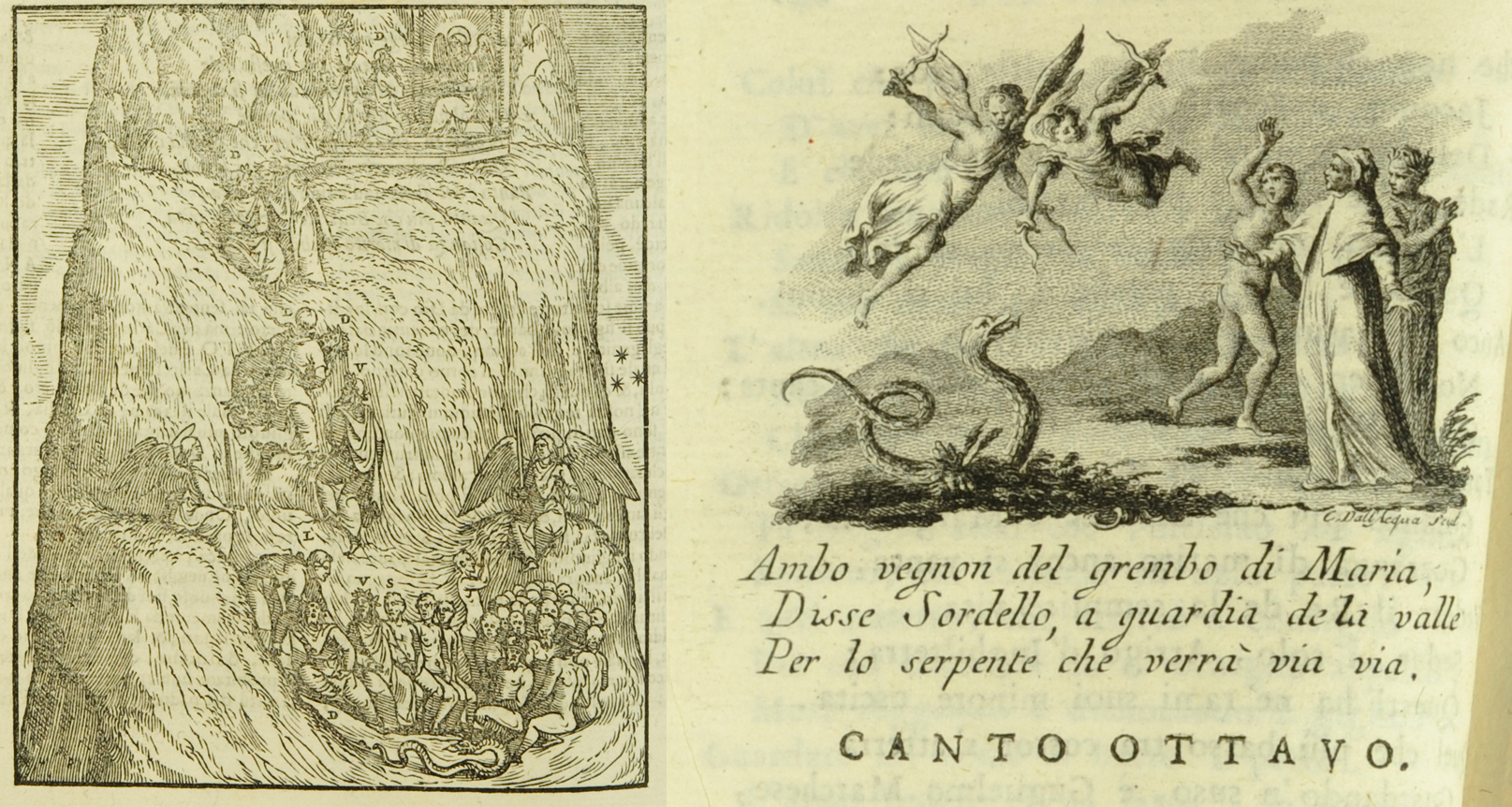
Next is the 1784 ‘Parnaso italiano’ edition of Dante. The ‘Parnaso italiano’ books were a series of classic Italian poetry published by A. Zatta and sons from 1784-1791. This series included Petrarch, Dante, Ariosto, Berni, etc. The Commedia constitutes vols. 3-5 of this series and was published in 1784. Each canto is illustrated with vignettes which are based on engravings found in the 1757-17858 Venice edition of Dante, mostly signed ‘C. Dell’Acqua’or Cristoforo Dall’Acqua who worked as an engraver in Vicenza. The books of this series were small, pocket-sized volumes designed to be highly consumable. St Andrews copy can be found at classmark =s PQ4302.D.84, vols. 1-3.
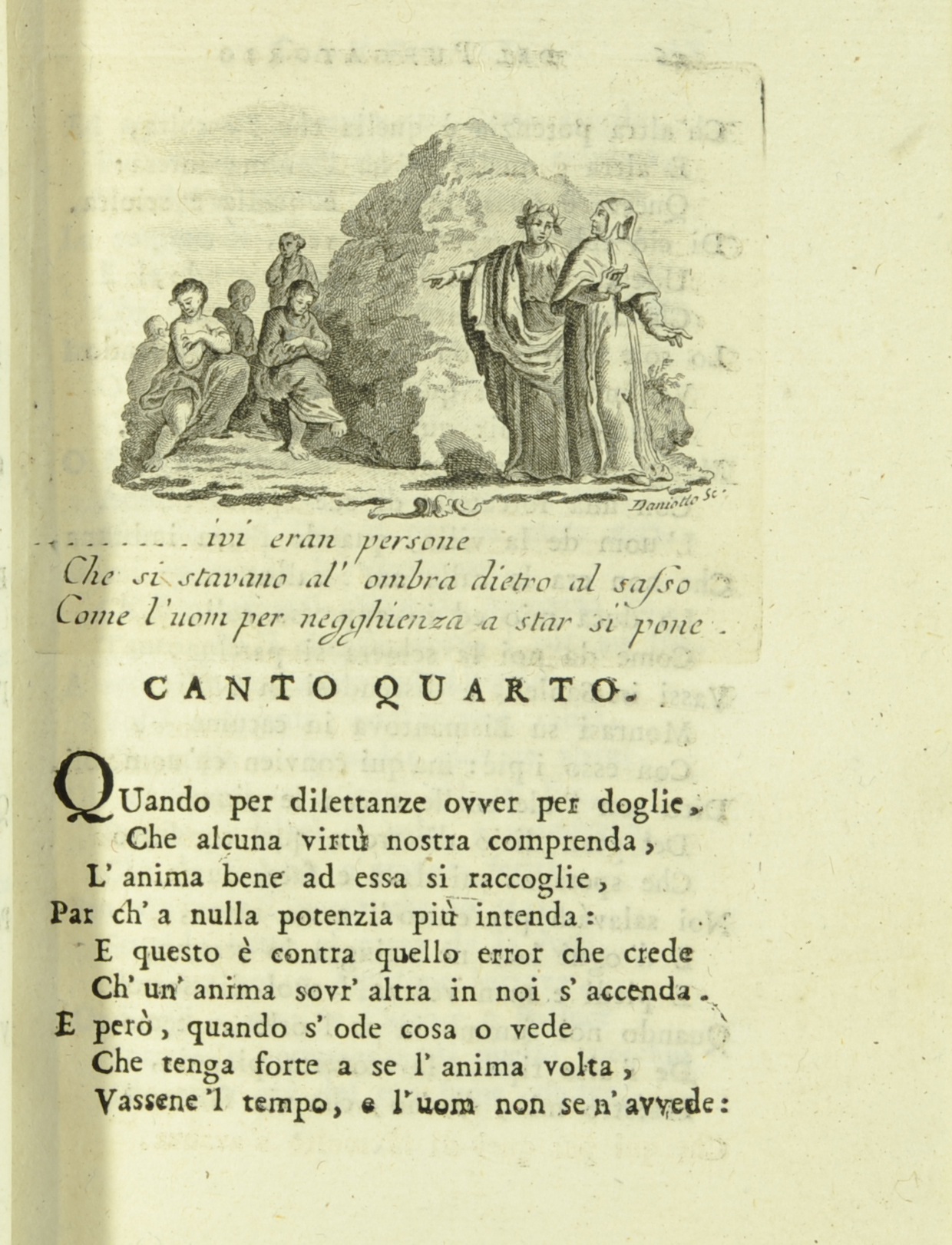
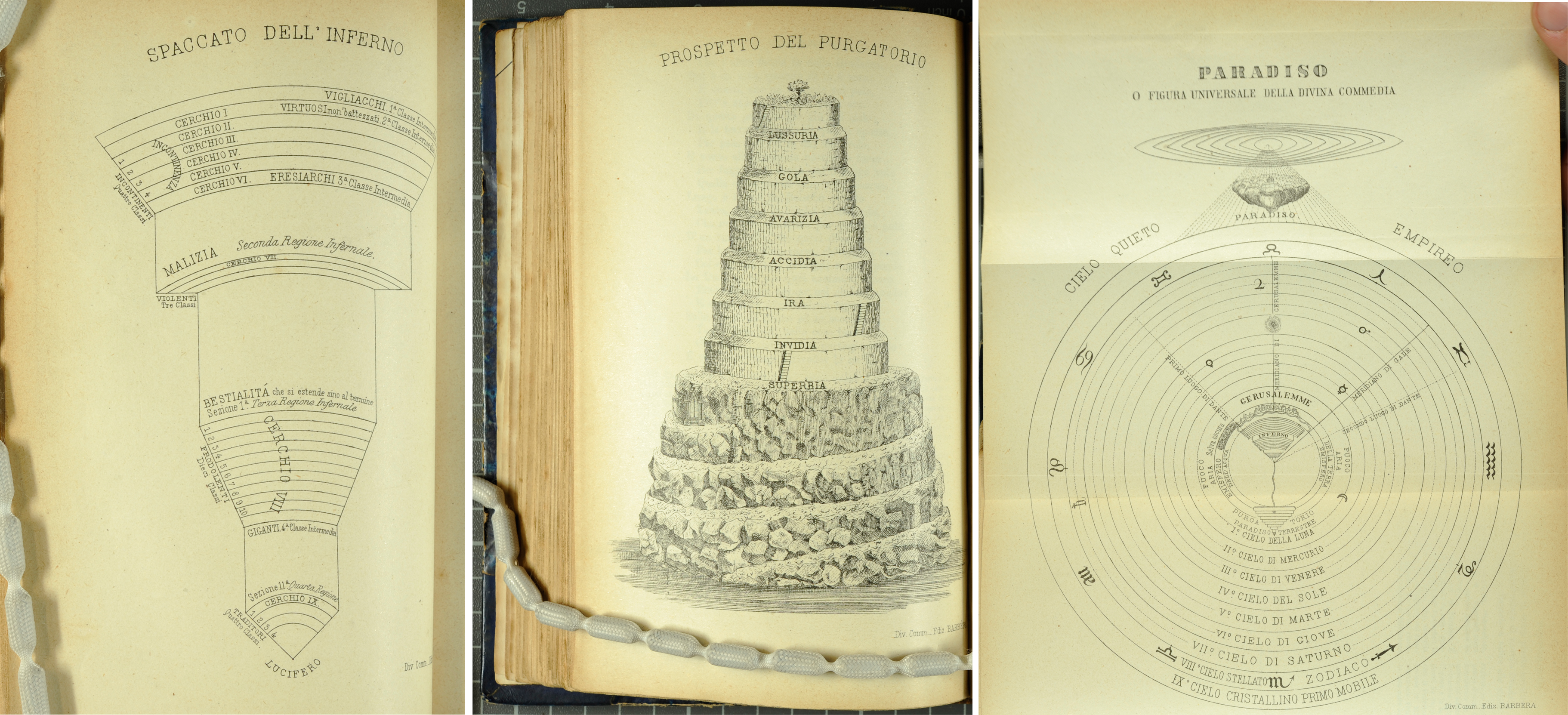
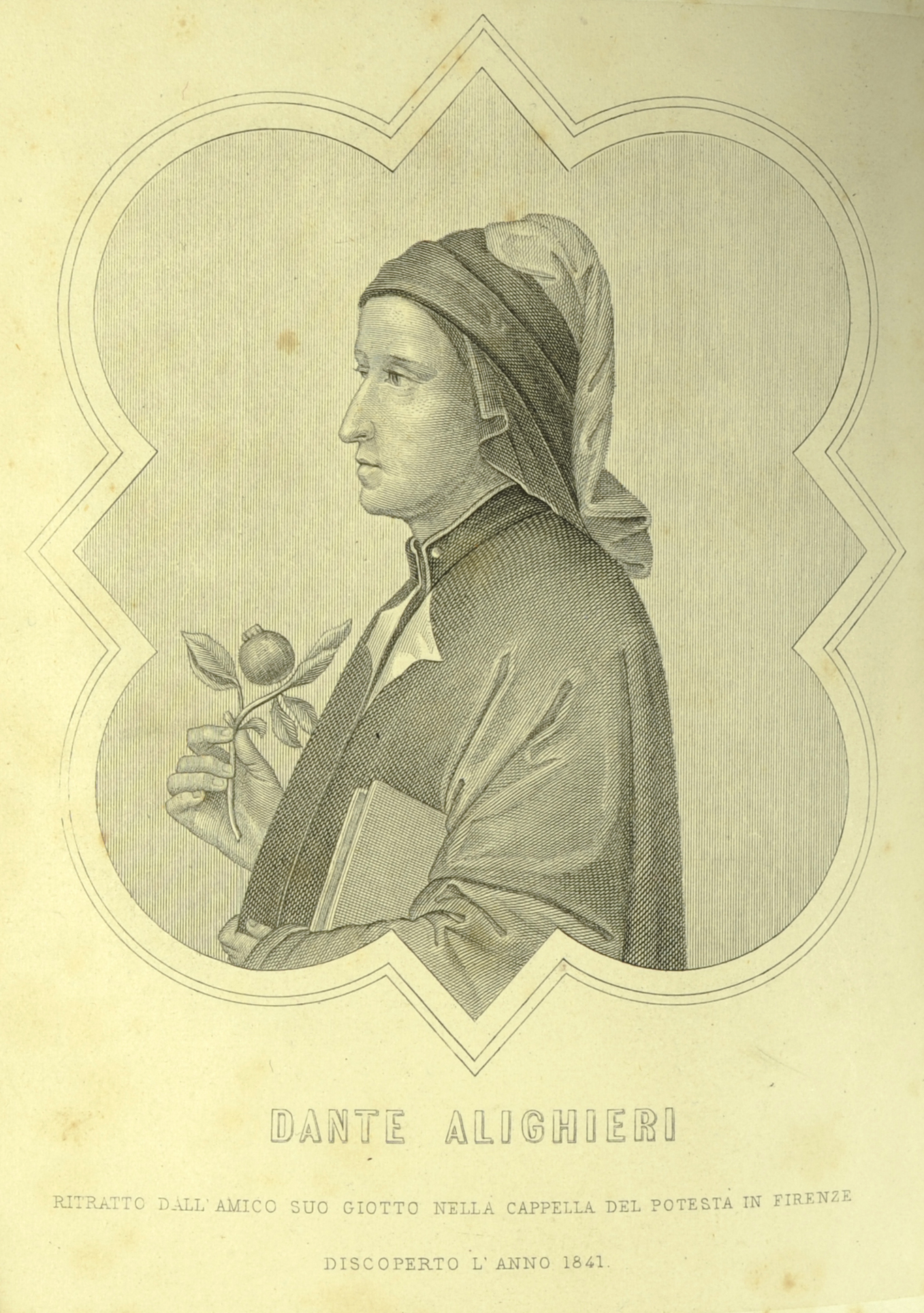
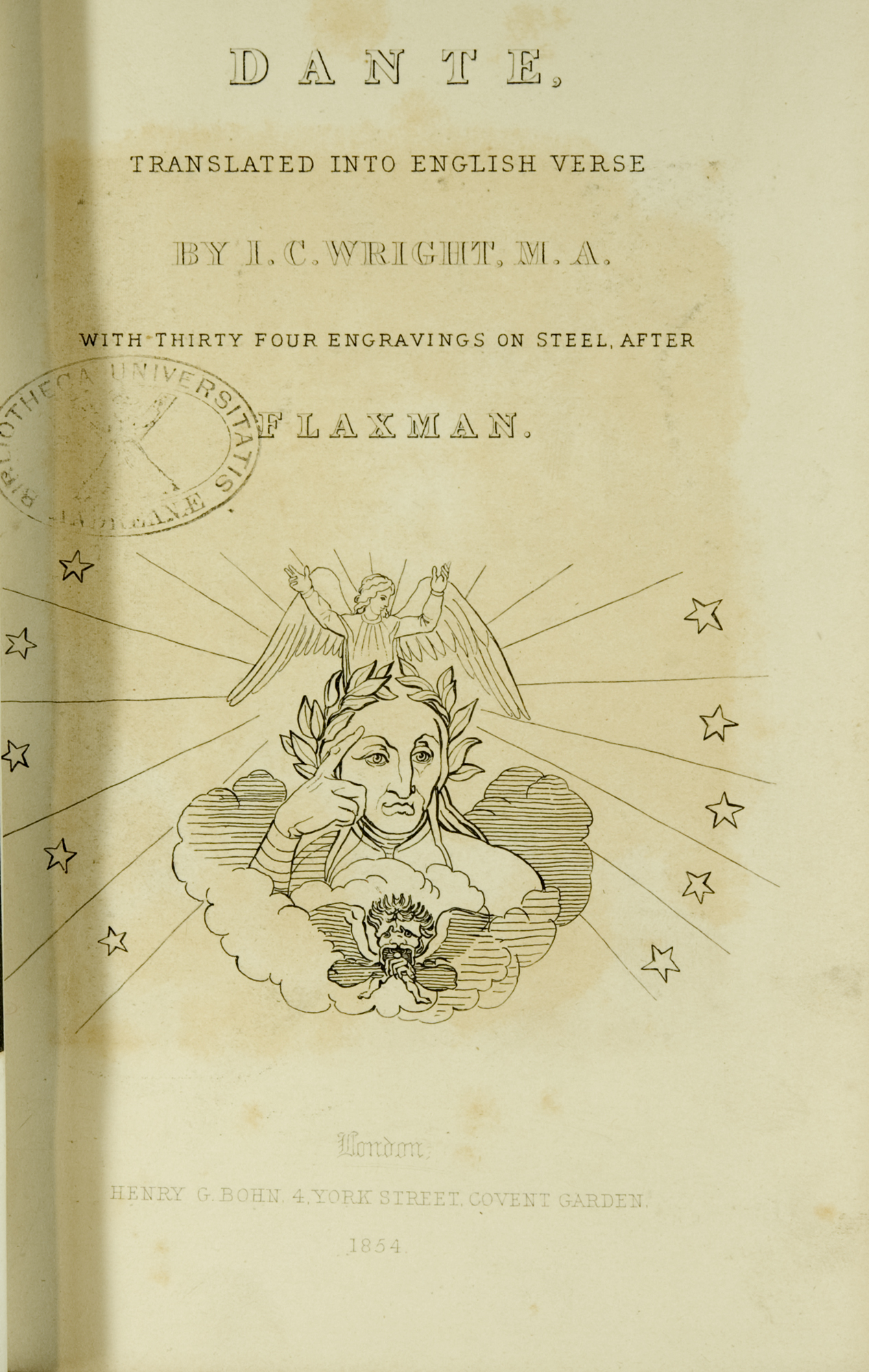
These two small-sized nineteenth century editions of Dante feature some interesting takes on standard Commedia illustrations. Above are the three diagrams of the Inferno, Purgatorio and Paradiso from the 1889 printing of Pietro Fraticelli’s edition. These illustrations, with the portrait featured here on the left, are the only to be found in this edition, but the portrait especially is of a different quality to those most commonly found of Dante (see Doré’s below or the Flaxman-inspired engraving on the right). Below and to the right are two illustrations found in I.C. Wright’s English translation of the Commedia from 1866. This edition is illustrated with “engravings on steel, after designs by Flaxman”, meaning John Flaxman, a neo-classical sculptor and artist.

These clean illustrations with figures in very dramatic and statuesque poses provide a polar opposite to the final illustrated Dante of this post: Gustave Doré’s masterful engravings:
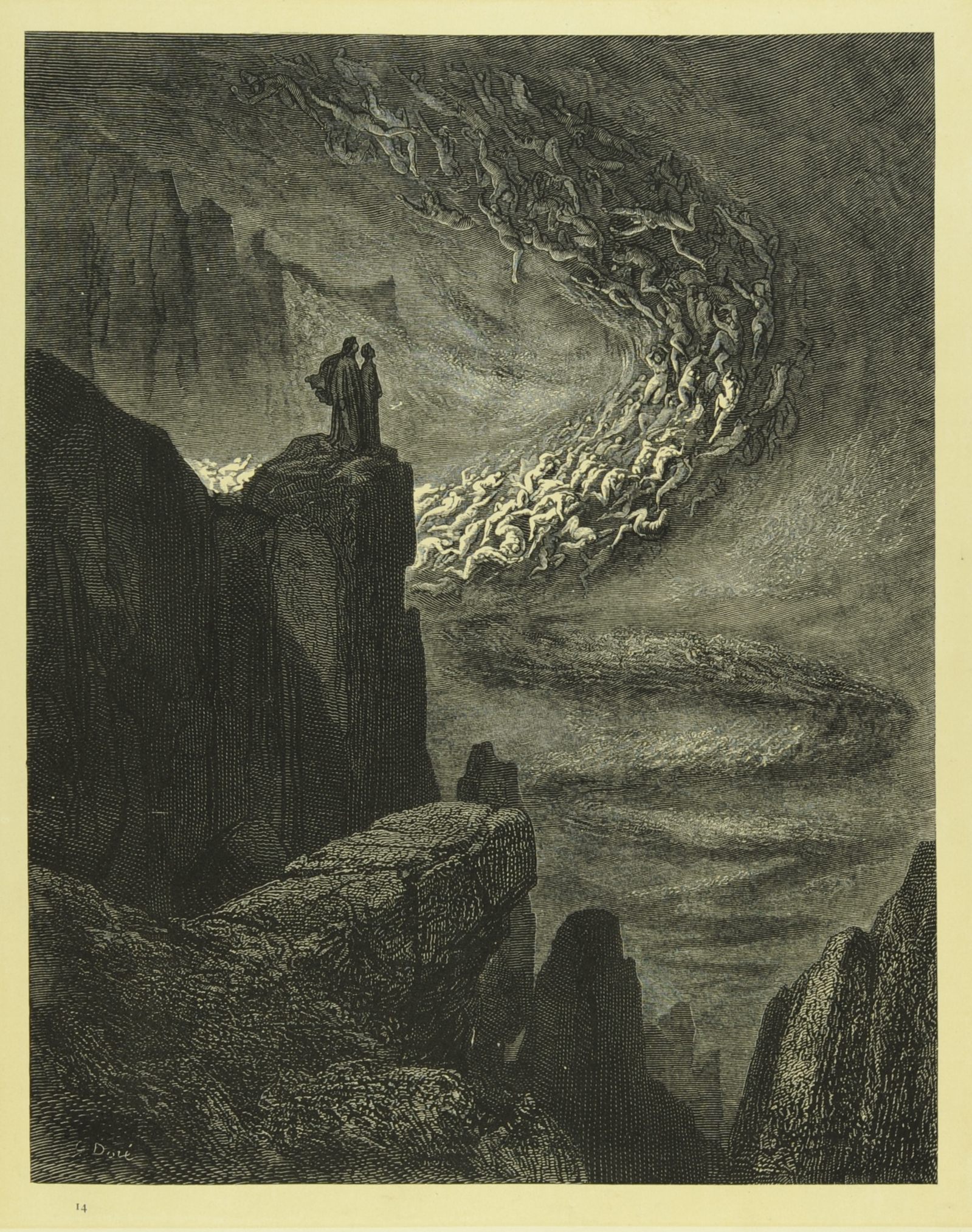
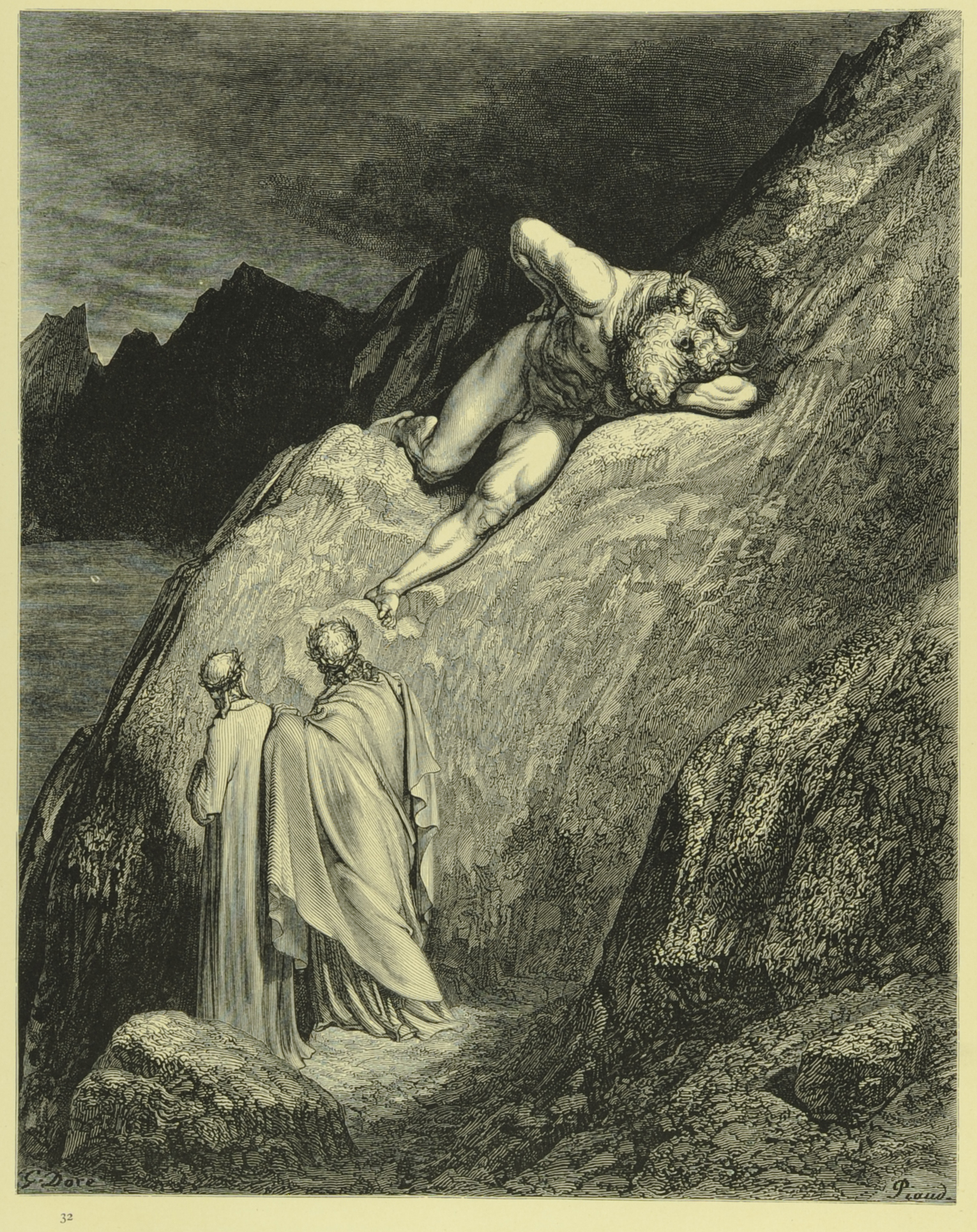
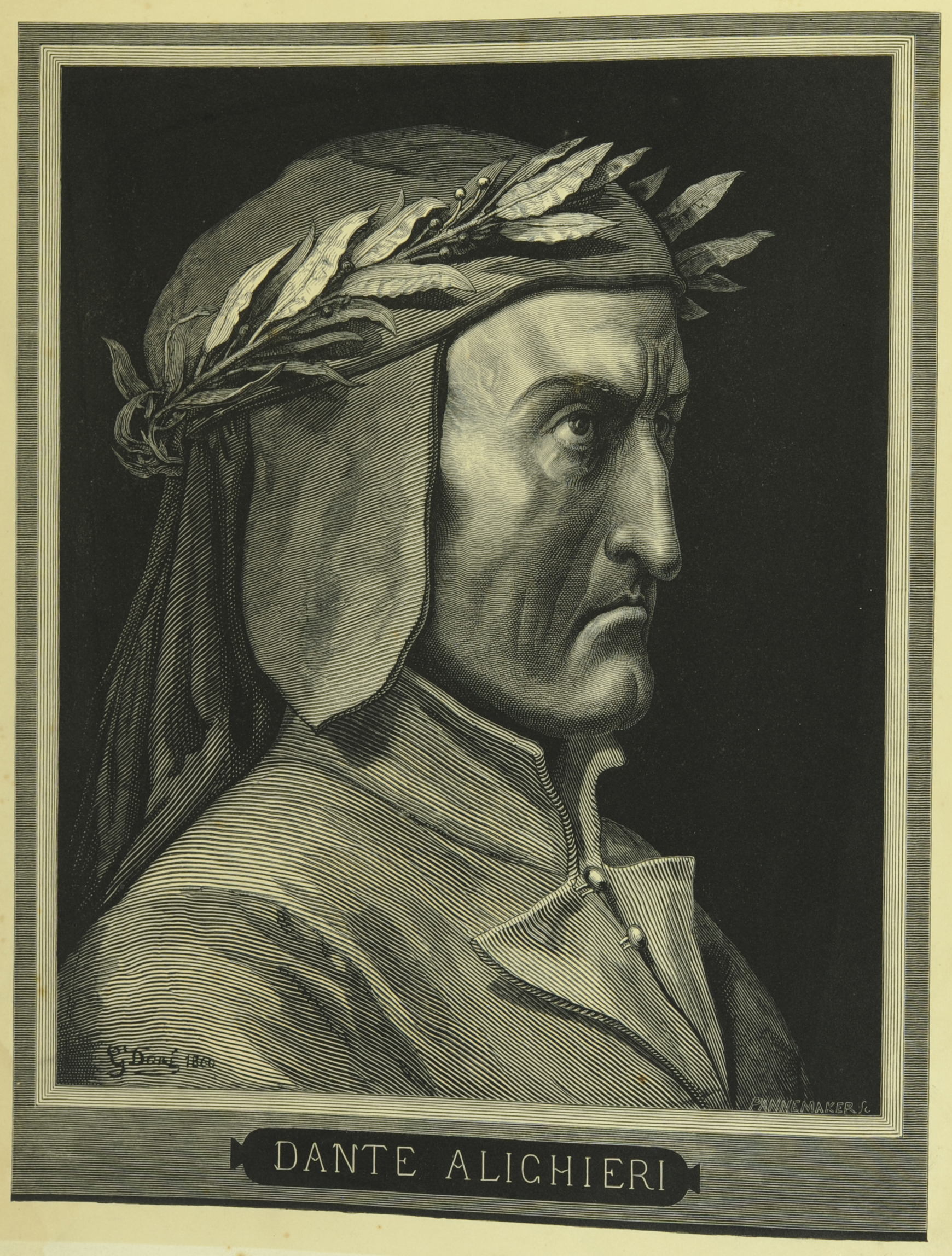
I’ve saved the best Dante illustrator for last, in my opinion. We’re keeping to a tight schedule for this run of 52 weeks of illustrations, and I just had to find a way to squeeze in Doré, my favourite of book illustrators. I’ve been hung up on Doré ever since I first saw his illustrations for Don Quixote as a teenager. He was a prolific and extermely detailed artist and engraver, however it is in his finest works in which his ability to portray detail even in the darkest of shadows is truly what make him stand out as an engraver. Our edition of the 1903 printing of H.F. Cary’s English translation of Dante, entitled The vision of hell, features reprints of some of Doré’s finest engravings produced for the 1857 and 1866 editions of Dante. The Commedia gave Doré the perfect subject for dark, dark images full of rich detail (above) as well as some shockingly bright images (below).
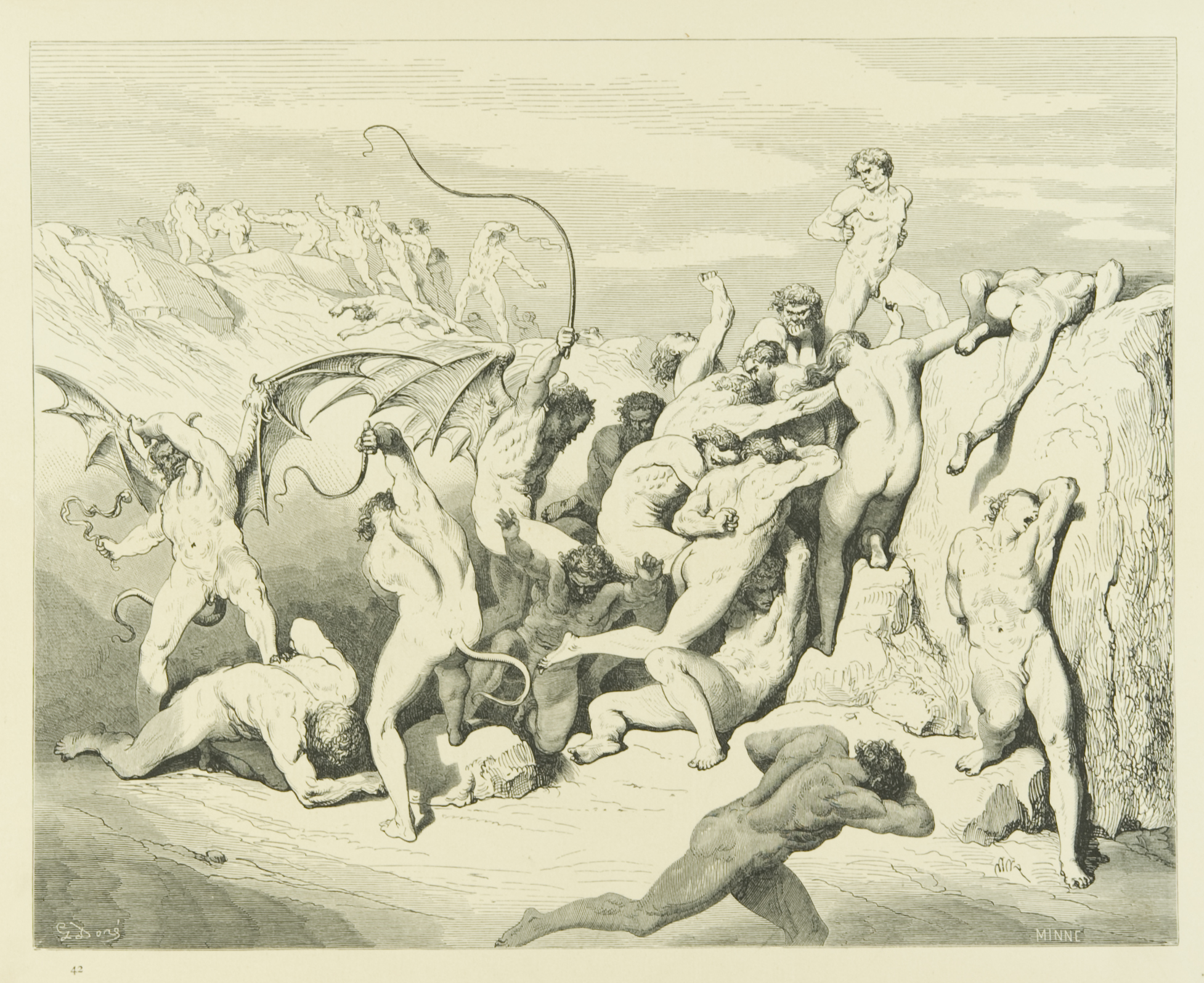
If you’re in St Andrews this week and are a Dante enthusiast or a Dante beginner, you should try to attend the Lectura. It is the first event of its kind to be held in the U.K. and has attracted scholars from all over the world since 2009. And, if you like any of what you see above, come find Special Collections to take a closer look!
–DG
[…] Schlundqualen im allerschlimmsten Hölleninferno, Divina Commedia Inferno Purgatorio Paradies DANTE1 DANTE2 Hölderlin Vergil Knallstein Bearbeitung Bruno Mayer. Antenora nach Antenor aus der Ilias, […]
Reblogged this on brunomayer40.